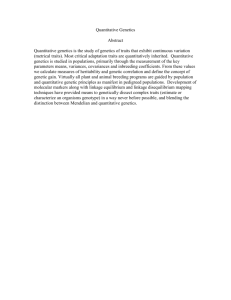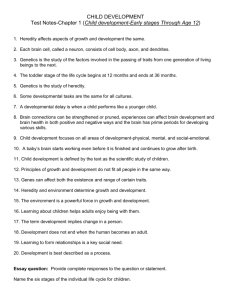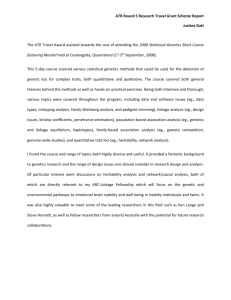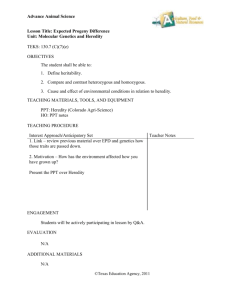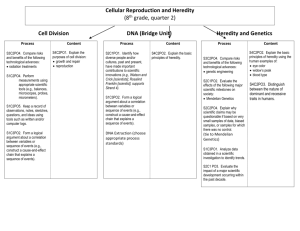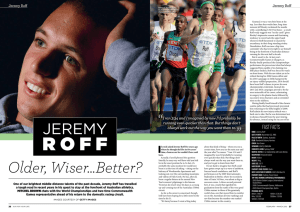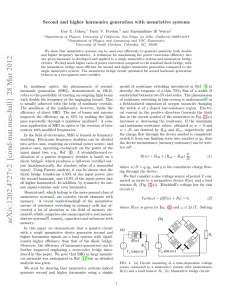Evolutionary Quantitative Genetics — General Info Fall 1999 333 Science II Instructor:
advertisement
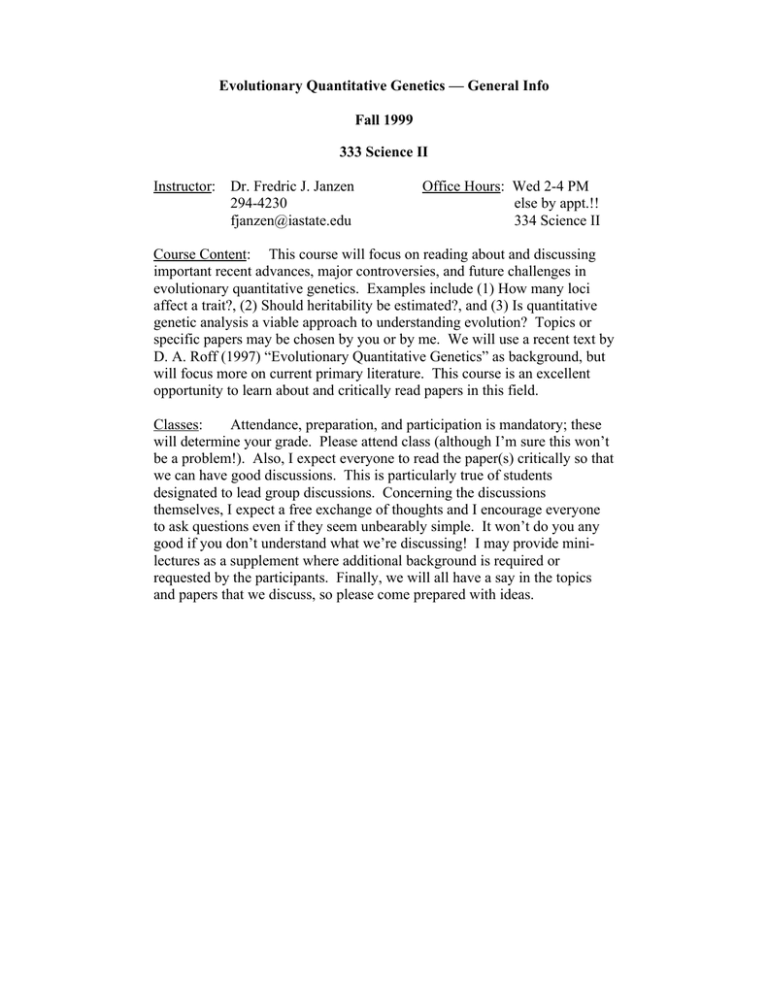
Evolutionary Quantitative Genetics — General Info Fall 1999 333 Science II Instructor: Dr. Fredric J. Janzen 294-4230 fjanzen@iastate.edu Office Hours: Wed 2-4 PM else by appt.!! 334 Science II Course Content: This course will focus on reading about and discussing important recent advances, major controversies, and future challenges in evolutionary quantitative genetics. Examples include (1) How many loci affect a trait?, (2) Should heritability be estimated?, and (3) Is quantitative genetic analysis a viable approach to understanding evolution? Topics or specific papers may be chosen by you or by me. We will use a recent text by D. A. Roff (1997) “Evolutionary Quantitative Genetics” as background, but will focus more on current primary literature. This course is an excellent opportunity to learn about and critically read papers in this field. Classes: Attendance, preparation, and participation is mandatory; these will determine your grade. Please attend class (although I’m sure this won’t be a problem!). Also, I expect everyone to read the paper(s) critically so that we can have good discussions. This is particularly true of students designated to lead group discussions. Concerning the discussions themselves, I expect a free exchange of thoughts and I encourage everyone to ask questions even if they seem unbearably simple. It won’t do you any good if you don’t understand what we’re discussing! I may provide minilectures as a supplement where additional background is required or requested by the participants. Finally, we will all have a say in the topics and papers that we discuss, so please come prepared with ideas. Tentative Schedule and Topics WEEK TOPIC [readings from Roff (1997)] 1 Organizational meeting 2 Background [Chapter 10] 3 Interpreting heritability [pp. 24-34] Devlin et al. 1997. Nature 388:468-471. 4 Utility of lab-estimated heritabilities [pp. 61-72] Janzen. 1992. Genetics 131:155-161. Riska et al. 1989. Genetics 123:865-871. Weigensberg and Roff. 1996. Evolution 50:2149-2157. 5 Heritabilities of different classes of traits [none] Mousseau and Roff. 1987. Heredity 59:181-197. Price and Schluter. 1991. Evolution 45:853-861. Service and Rose. 1985. Evolution 39:943-945. 6 Gerardo Marquez seminar 4:10 Gene flow among cosmopolitan house fly (Musca musca domestica) populations: a survey of mitochondrial diversity 7 Genetic correlations [pp. 73-100] Cheverud. 1988. Evolution 42:958-968. Roff. 1995. Heredity 74:481-490. Willis et al. 1991. Evolution 45:441-444. 8 Bruce Weir seminars 4:10 Are DNA profiles unique? 8:00 Bioinformatics: a new discipline 9 Genetic variance/covariance matrices [pp. 101-117] Deng et al. 1999. Evolution 53:1592-1599. Phillips and Arnold. 1999. Evolution 53:1506-1515. Arnold and Phillips. 1999. Evolution 53:1516-1527. 10 Microevolutionary response to selection in nature [pp. 118-164] Grant and Grant. 1995. Evolution 49:241-251. Larsson et al. 1998. Evolution 52:1169-1184. 11 Anthony Edwards seminar 4:10 Fisher information and the fundamental theorem of natural selection 12 Epistasis Cheverud et al. 1999. Evolution 53:1009-1018. Fenster et al. 1998. TREE 12:282-286. Wright. 1982. Evolution 36:427-443. PLUS Jim Holland’s special presentation on Wright’s shifting balance theory on 11/17 13 Thanksgiving week 14 Correlated response to selection [pp. 165-195] Deng and Kibota. 1995. Evolution 49:572-574. Roff and Fairbairn. 1999. Heredity 83:440-450. 15 Phenotypic plasticity and reaction norms [pp. 196-240] Anonymous. Submitted. Evolution. Via et al. 1995. TREE 10:212-217. 16 Prospectus for evolutionary quantitative genetics [pp. 388-398] Brodie. 1996. Herpetologica 52:611-620.

